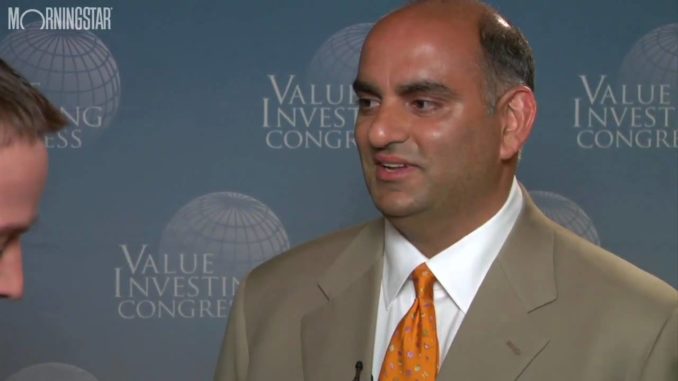Содержание

When considering the weighted average cost of capital, companies may favor the financial option that is least expensive. For example, its cost of equity may be 8% while its cost of debt may be 4%. Assuming a company has a balanced capital structure (50% of each), the company’s total cost of capital is 6%. The cost of capital is the total cost of raising capital, taking into account both the cost of equity and the cost of debt. A stable, well-performing company generally will have a lower cost of capital. To calculate the cost of capital, the cost of equity and the cost of debt must be weighted and then added together.

This expected return can be an important value for an investor when considering an investment. Generally, the expected return matches the period of time used to find the expected market return. For example, the market may be expected to return 8% over a period of ten years.
What is Cost of Preferred Stock?
In addition, it gives investors the ability to profit from company earnings in the form of dividends and vote on actions within the company. Hence, the cost of equity is higher compared to the cost of debt . As a matter of fact, it can be seen that debt holders are paid before the equity investors.
- Cost of equity is the return that a company requires for an investment or project, or the return that an individual requires for an equity investment.
- Please feel free to download it and use it and to then convey your appreciation to him.
- Cost of capital enables business leaders to justify and garner support for proposed ideas, decisions, and strategies.
- Gain in-demand industry knowledge and hands-on practice that will help you stand out from the competition and become a world-class financial analyst.
- In an ideal world, businesses balance financing while limiting cost of capital.
Publicly-listed corporations can raise capital by borrowing money or promoting possession shares. Debt traders and equity buyers require a return on their money, either via interest funds or capital gains/dividends. Additionally, along with the cost of debt and the cost of preferred stock, the cost of equity is a central piece in calculating the weighted average cost of capital . Cost of equity is the minimum rate of return which a company must earn to convince investors to invest in the company’s common stock at its current market price. It is also called cost of common stock or required return on equity. Since the preferred stock is expected to grow at a fixed growth rate, which is 2.0% in our example, the cost of preferred stock is higher than in the case with zero DPS.
Cost of Equity Calculation Example
The rate at which these two things are equal is the cost of equity. This number helps financial leaders assess how attractive investments are—both internally and externally. It’s difficult to pinpoint cost of equity, however, because it’s determined by stakeholders and based on a company’s estimates, historical information, cash flow, and comparisons to similar firms. We have the current market price ($86.81) and we need to estimate the growth rate and dividends in next period. Growth rate equals the product of (1 – dividend payout ratio) and ROE.
The capital asset pricing model is a component of the efficient market hypothesis and modern portfolio theory. CAPM measures the amount of an asset’s expected return which is the first step in building out an efficient frontier. CAPM itself uses a foundational equation to calculate the expected return of an asset with the incorporation of several factors. Some cash flows do not incur a tax charge, and there may be tax losses to consider and timing issues. Formula is the method of calculating the return on what shareholders expect to get from their investments into the firm.
One can calculate the equity cost by using the dividend discount approach formula or the CAPM model. Similar to unlevered free cash flows , the WACC represents the cost of capital to all capital providers (e.g. common equity, preferred stock, debt). If you’re building an unlevered discounted cash flow model, the weighted average cost of capital is the appropriate cost of capital to use when discounting the unlevered free cash flows. Cost of capital is the minimum rate of return or profit a company must earn before generating value. It’s calculated by a business’s accounting department to determine financial risk and whether an investment is justified.
https://1investing.in/ capital is among the topics included in the Corporate Finance module of the CFA Level 1 Curriculum. Cost of capital enables business leaders to justify and garner support for proposed ideas, decisions, and strategies. Stakeholders only back ideas that add value to their companies, so it’s essential to articulate how yours can help achieve that end. If I have to calculate the enterprise value (i.e. the value of equity + debt) then I have to add to the equity value the debt and exclude the cash component. In the above example, we observe that the equity value for company B is higher than company A. Despite the lower number of shares the equity value for company B is higher.
Treasury bills (T-bills) is generally used as the risk-free rate because of the low volatility of this type of investment and the fact that the return is backed by the government. The cost of equity can mean two different things, depending on who’s using it. Investors use it as a benchmark for an equity investment, while companies use it for projects or related investments. The value will always be cheaper because it takes a weighted average of the equity and debt rates . Cost of equity can be used to determine the relative cost of an investment if the firm doesn’t possess debt (i.e., the firm only raises money through issuing stock).
Is Your Idea Worth the Investment?
Increased debt will make a constructive contribution to a agency’s ROE only if the matching return on belongings of that debt exceeds the rate of interest on the debt. One method that corporations and buyers can estimate the price of fairness is through the capital asset pricing mannequin . Beta – Beta can be defined as the degree to which a company’s equity returns vary with the return of the overall market.
Management should have a good estimate of the expected dividend for the upcoming year. The best way to estimate the expected dividend is to look at the past rates of dividend as well as its growth rate. Another factor that can help estimate the expected dividend is the company’s forecasted earnings.
With this, we have all the necessary information to calculate the cost of equity. Here, it is calculated by taking dividends per share into account. Finance principle and follow provides various fashions for estimating a selected agency’s price of fairness such because the capital asset pricing mannequin, or CAPM. Covariance is an evaluation of the directional relationship between the returns of two assets.
This is important to note that preference shares would not be part of this because of its nature of the fixed obligation. This ratio is very useful for all investors as it helps them to understand thefinancial leverage of a company. Cost of capital is extremely important to investors and analysts.
As per the balance, the information is available.Calculate Airbus SE’s equity based on the given information. In all cases, net Program Fees must be paid in full to complete registration. We also allow you to split your payment across 2 separate credit card transactions or send a payment link email to another person on your behalf. If splitting your payment into 2 transactions, a minimum payment of $350 is required for the first transaction.
Example: Cost of equity using dividend discount model
It is an integral part a cost of equity excel’s Weighted Average Cost of Capital . To calculate COE, first determine the market rate of return, the risk-free rate of return and the beta of the stock in question. The market rate of return is simply the return generated by the market in which the company’s stock is traded, such as the Nasdaq or S&P 500. The risk-free rate is the expected rate of return as if the funds were invested in a zero-risk security.
Dividend Capitalization vs. CAPM
It shows, a company is heavily leveraged, 5 times of the equity capital infused by the shareholders. When a business does not pay out dividends, this information is estimated based on the cash flows of the organization and a comparison to other firms of the same size and operating characteristics. The equity formula gives us an estimate about the value of a company at a particular point in time. If the equity formula value keeps on shooting upwards, it means that the investor sentiment towards a particular stock is also strengthening. But some companies with bad businesses also rise because of a market frenzy. The other peculiarity about the equity value formula is that there is no real money involved but it is all about the share price.
What is the Cost of Equity?
The cost of equity can be calculated by using the CAPM or Dividend Capitalization Model . The advantage is in the form of its simplicity and logical correctness. In this model, our basis of the analysis is based on the fundamental general and rational rule of giving and taking the comparison.
The Cost of Equity represents the minimum threshold for the required rate of return for equity investors, which is a function of the risk profile of the company. The cost of equity can be defined as the minimum rate of return required by the shareholder or investor when equity is being put into the firm. A positive equity value indicates that the company has adequate total assets to pay off its total liabilities.
Dividend Discount ModelThe Dividend Discount Model is a method of calculating the stock price based on the likely dividends that will be paid and discounting them at the expected yearly rate. In other words, it is used to value stocks based on the future dividends’ net present value. The number of periods is used to determine how many periods of discounted cash flows there will be before adopting the terminal value for further periods. Myattached Excel filewill calculate for up to 20 periods, even allowing for a shorter first period . The price of fairness concept is essential when it comes to valuing shares on the inventory market.
The company with the highest beta sees the highest cost of equity and vice versa. It makes sense because investors must be compensated with a higher return for the risk of more volatility . One such is assuming correct market situations, which are very fluctuating and are influenced by big traders.